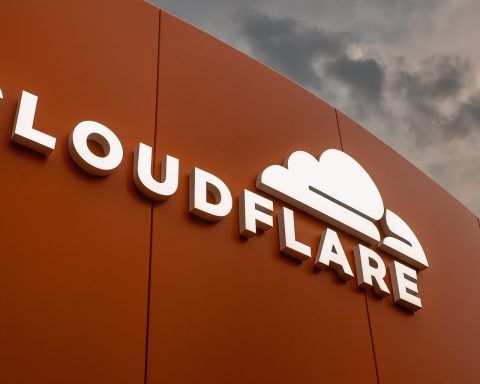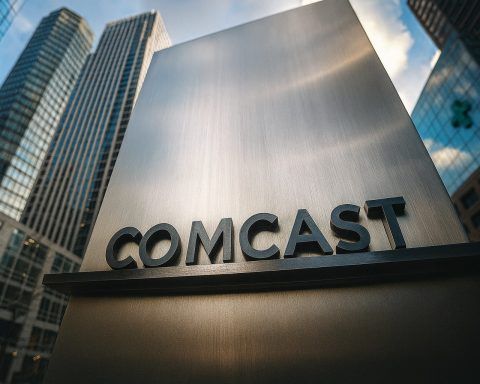- By the end of 2022, 89.5% of Belarusians were online, with about 8.27 million internet users and 86.9% penetration recorded by early 2023.
- Beltelecom reported about 2.9 million GPON fiber subscribers by the end of 2022, a figure that reached roughly 3 million by mid-2024.
- Approximately 82.4% of small settlements with 50–100 inhabitants have access to fiber-optic broadband.
- As of April 2024, 4G LTE coverage reached 93% of Belarus’s territory and 99% of its population via the beCloud network.
- MTS Belarus had around 5.7 million mobile subscribers, A1 about 4.8 million, and life:) about 1.5 million as of 2024.
- There is no commercial 5G service in Belarus as of 2024, with only small pilot tests in Minsk and rollout considered uncertain due to sanctions.
- During the August 2020 presidential election protests, Belarus experienced a nationwide internet shutdown lasting about 61 hours.
- By end-2022, over 10,000 websites were blocked, with at least 2,000 more blocked in 2023.
- Belarus operates Belintersat-1, launched in 2016, primarily for television and government use, while civilian two-way satellite internet is banned.
- In 2022, 2 GB of mobile data cost about 0.62% of monthly GNI per capita and a 5 GB fixed broadband plan about 0.73%.
Belarus boasts a paradoxical internet landscape: on one hand, it has a highly developed network infrastructure with broad access and affordable high-speed connections; on the other hand, it operates under one of the most tightly controlled and censored regimes in Europe. As of 2022, nearly 89.5% of Belarusians were internet users [1], reflecting significant penetration even by global standards. The country has invested heavily in both wired broadband (especially fiber-optic networks) and wireless mobile networks, achieving some of the highest connectivity rates in Eastern Europe [2]. This report provides a comprehensive overview of Belarus’s internet, covering the wired broadband infrastructure, the expansive mobile internet landscape, emerging satellite connectivity (“watching from the sky”), technical performance metrics, and the influence of government policies on access and freedom. It also examines disparities between urban and rural access, the digital divide among different social groups, and recent developments shaping the future of connectivity in Belarus.
Internet Penetration and Infrastructure Overview
Belarus enjoys widespread internet penetration supported by a robust infrastructure. By the start of 2023, roughly 8.27 million people in Belarus were internet users, about 86.9% of the population [3]. Official statistics similarly reported that 89.5% of the population was online by end of 2022, up nearly 3% from the previous year [4]. In absolute terms, Belarus had about 3.1 million fixed broadband subscriptions and 9.3 million mobile internet subscriptions for a population of 9.4 million [5]. This translates to a fixed broadband penetration rate around 33–35% of the population and a mobile broadband penetration exceeding 100% (meaning many citizens have more than one mobile data subscription) [6]. In fact, Belarus’s mobile internet penetration (over 100% of the population) was among the highest in Central and Eastern Europe as of 2022 [7].
Wired Infrastructure: The backbone of Belarus’s internet is a state-of-the-art fiber-optic network that reaches most population centers. Over the past decade, gigabit passive optical network (GPON) fiber has rapidly replaced older ADSL/DSL lines across the country [8]. As a result, Belarus is now among Europe’s leaders in household fiber-optic penetration [9]. By the end of 2022, Beltelecom (the national telecom) reported about 2.9 million GPON fiber subscribers [10], and that figure reached roughly 3 million by mid-2024 [11]. The fiber rollout has extended beyond cities into smaller towns and villages; in fact, approximately 82.4% of all small settlements with 50–100 inhabitants now have access to fiber-optic broadband, thanks to ongoing expansion programs [12]. These investments fall under the state’s “Digital Development of Belarus 2021–2025” program, which prioritizes bringing high-speed internet even to small settlements [13]. Consequently, fixed broadband quality is high: more than half of users opt for plans of 100 Mbps or greater, and the average connection speed on Beltelecom’s fiber network is about 96 Mbps [14]. Median nationwide fixed-line download speeds stood around 53–63 Mbps in 2023–2024 [15] [16], a solid improvement year-over-year. Latency on wired connections is generally low (on the order of a few tens of milliseconds domestically), given the modern fiber infrastructure and direct connections to European and Russian backbone networks.
International Connectivity: Belarus’s internet is internationally connected via several fiber trunk lines and satellite links. The country is part of the Trans-European and Trans-Asia-Europe fiber-optic cable systems, with major terrestrial cables linking into Latvia, Poland, Russia, and Ukraine [17]. Beltelecom, the state-owned operator, controls all gateways to the global Internet: it owns the national internet exchange and backbone channels that connect Belarus to carriers like Latvia’s Lattelecom, Russia’s Rostelecom, and others [18]. There are also earth satellite stations (e.g. Intelsat, Eutelsat) providing connectivity, though these are typically used as backup or for specific services [19]. This centralized control over international access means the government can closely monitor or even cut off external connectivity if desired (a point expanded in the censorship section). However, under normal conditions, the capacity and redundancy of Belarus’s links (including a 400 Gbps link to Russia commissioned in 2006 [20]) have been sufficient to serve the nation’s needs.
Major Internet Service Providers (ISPs) and Services
Despite the number of licensed ISPs in Belarus (around 170 companies were providing telecom services as of 2023 [21]), the market is dominated by a few key players, all of which are either state-owned or closely regulated by the state. The table below summarizes the major ISPs and operators and their services:
| Provider | Ownership | Services | Subscriber Base (approx.) | Notes |
|---|---|---|---|---|
| Beltelecom | State-owned (government) | Fixed broadband (ADSL, fiber GPON), fixed telephone; Launched mobile service (4G) in 2022 | ~2.5 million fixed broadband (2023) [22]; mobile: new entrant (bundled offers) | National telecom monopoly; owns backbone network; brands include “byfly” (internet). |
| MTS Belarus | Joint venture (51% state via Beltelecom, 49% Mobile TeleSystems Russia) | Mobile cellular (2G/3G/4G LTE) | ~5.7 million mobile subscribers (mid-2024) [23] | Largest mobile operator; uses beCloud infrastructure for 4G. |
| A1 Belarus | Private (A1 Telekom Austria Group) | Mobile (2G/3G/4G); Fixed broadband (GPON, Ethernet, DSL in cities) | ~4.8 million mobile subscribers (2024) [24]; ~400 000 fixed broadband [25] | Formerly Velcom; second-largest mobile carrier; acquired fixed ISP (Atlant Telecom) to offer home internet. |
| life:) (BeST) | Private (Turkcell, Turkey) | Mobile (2G/3G/4G LTE) | ~1.5 million mobile subscribers (2024) [26] | Smallest mobile operator; fully Turkcell-owned since 2022. |
| beCloud | State-affiliated (Belarusian Cloud Technologies) | Wholesale 4G network operator; Data centers | (Wholesale only; no direct retail subscribers) | Operates the single national 4G LTE radio network, which all mobile operators leverage [27]. |
| NTEC | State (Operations & Analysis Center) | Internet exchange & traffic gateway | (Not consumer-facing) | National Center for Traffic Exchange – runs the BY-IX peering point; one of two entities (with Beltelecom) handling international traffic [28]. |
Beltelecom: As the incumbent state telecom, Beltelecom is the linchpin of Belarusian internet. It owns and operates the country’s fiber backbone and international gateways, meaning all other ISPs rely on Beltelecom’s infrastructure at some level [29]. Beltelecom dominates fixed broadband, with about 78% of all fixed subscriptions under its control (2.5 million out of 3.2 million in 2023) [30]. The company offers ADSL and fiber broadband (marketed under brands like byfly), telephone services, and since late 2022 even mobile service. (The government granted Beltelecom a license to enter the mobile market, and it began selling mobile packages, likely as an MVNO or in partnership, to bundle with its home internet offerings [31].) Beltelecom’s near-monopoly is reinforced by policy: it and the NTEC are the only entities allowed to handle connectivity with outside networks [32]. Through these choke points, the state can enforce pricing and service standards – the positive side being low prices and universal coverage, the negative being centralized control (discussed later). Notably, Beltelecom’s investment in fiber has modernized wired internet across Belarus, making gigabit speeds available even in provincial towns. It had around 3 million broadband customers by mid-2024 [33]. The largest private ISP by contrast (A1) had only ~400k fixed internet customers [34], illustrating Beltelecom’s dominance.
Mobile Operators: Belarus has three major mobile network operators for consumer cellular internet: MTS Belarus, A1, and life:). MTS Belarus is the largest with ~5.7 million mobile subscribers [35]. It’s a joint venture between Beltelecom (state) and Russia’s MTS, effectively giving the state a stake in the biggest mobile provider. A1 (formerly Velcom) is the second-largest with over 4.8 million subscribers [36] and is foreign-owned by Telekom Austria Group. life:) is a distant third, with about 1.5 million users [37], and was fully acquired by Turkey’s Turkcell in 2022 (after the Belarusian government sold its remaining stake).
All three mobile carriers offer 2G/3G/4G voice and data services. Uniquely, Belarus deploys 4G LTE through a single shared network: beCloud (Belarusian Cloud Technologies), a state-controlled company, owns all 4G infrastructure which it leases to MTS, A1, and life:) [38]. This means instead of each operator building separate LTE towers, beCloud built one nationwide LTE network that everyone uses – a model aimed at cost efficiency and, presumably, easier state oversight. As of early 2024, 4G LTE coverage (via beCloud) reached about 93% of Belarus’s territory and 99% of the population [39], a substantial increase from ~83% territory coverage two years prior [40]. Meanwhile 2G/3G networks blanket over 98% of the territory [41], ensuring basic mobile coverage even in remote areas. 5G services have not been commercially launched; only small pilot tests have occurred. By late 2023, officials admitted that full 5G rollout was “uncertain” due to Western sanctions and waning business interest [42] – effectively putting next-gen mobile on hold. Instead, Belarus appears focused on maximizing 4G capacity and coverage for the near future, often with the help of Chinese vendors (Beltelecom has been working with Huawei on 5G-related technology, including trials of facial-recognition-equipped 5G systems) [43].
In terms of services, the mobile operators offer typical voice, SMS, and data plans. Mobile internet is widely used for social media, messaging (particularly Telegram is popular for news, given web media censorship), and streaming. Thanks to the shared LTE network, users of any carrier can get 4G speeds in major cities and most towns. However, competition in the mobile market is somewhat limited: prices are relatively low by regional standards, but the state’s influence (especially via MTS’s partial state ownership and the critical infrastructure) means operators rarely challenge government directives (for instance, they have cooperated with past internet shutdown orders as required by law).
Urban vs. Rural Access Disparities
Belarus is a highly urbanized country – about 80.5% of the population lives in urban areas (cities and towns) [44]. Historically, urban areas like Minsk and regional capitals have enjoyed better internet access than rural villages. However, the gap has narrowed in recent years due to deliberate infrastructure development. As of 2022, an estimated 92.5% of urban residents were internet users, compared to 79.7% of rural residents [45]. This roughly 13 percentage-point gap, while significant, is smaller than it was in the past (for context, in the mid-2010s only around 40% of rural residents were online, versus 70%+ in cities). Now, even in the countryside, a large majority have internet access, primarily through mobile networks or increasingly via fiber-to-the-home in larger villages.
Minsk, the capital, remains the best-connected locale: about 95.2% of Minsk city’s residents use the internet [46], essentially near-saturation. Other regions lag slightly; for example, the Hrodna (Grodno) region has ~91.3% internet usage, whereas the lowest is the Minsk region (the rural areas surrounding the capital) at 83.8% [47]. This suggests that even the least connected region still has over four-fifths of people online. The urban-rural divide is more pronounced among certain demographics – notably the elderly. In cities, 53.4% of seniors (65 and older) were internet users in 2021, whereas in villages only 28.2% of that age group was online [48]. This highlights that the remaining digital divide in Belarus is now largely about age and education (digital literacy), rather than pure infrastructure availability.
From an infrastructure perspective, almost every town of any size is connected. All district centers have had broadband (ADSL or fiber) since the late 2000s [49]. The ongoing GPON fiber expansion is bringing high-speed wired internet to settlements with just a few dozen households [50]. Where fiber or wired broadband is not present, 3G/4G mobile coverage fills the gap – rural users often depend on mobile internet from smartphones or 4G Wi-Fi routers. One remaining challenge is that smaller villages might have only older 3G service or weaker coverage, affecting speeds. But with 4G now covering 99% of the population [51], basic broadband via cellular is almost universally accessible.
Affordability has also improved nationwide, benefiting rural users. Internet tariffs in Belarus are very low relative to income (more on this under Digital Inclusion), meaning cost is less of a barrier than in many countries. In summary, urban residents still enjoy the fastest connections (gigabit fiber in many Minsk neighborhoods, multiple ISP choices in cities), whereas rural residents may have fewer choices (often just Beltelecom’s network and one mobile provider) and somewhat lower speeds. But nearly everyone, from city dwellers to farmers, can at least get online now. The remaining gaps are being closed through state programs aimed at “universalizing” broadband access in even the smallest communities.
Mobile Internet Landscape
Mobile internet is a cornerstone of Belarusian connectivity, with penetration effectively at or above 100% of the population [52]. This indicates many Belarusians use more than one SIM card or mobile subscription – common for those who separate work/personal lines or use dedicated data SIMs. The mobile landscape is defined by extensive coverage, improving speeds, and relatively affordable data plans, all under the purview of three main operators (MTS, A1, life:)).
Network Coverage and Technology: Belarus has achieved near-universal mobile coverage. GSM (2G) and 3G networks cover over 98–99% of the country’s territory [53], ensuring voice/SMS service in virtually all inhabited areas. The 4G LTE network, launched in 2015 via the beCloud infrastructure-sharing model, has quickly expanded. By April 2024, 4G signals covered 93% of Belarus’s territory and 99% of its population [54]. This means almost every populated locality has 4G access, though very remote areas may fall back to 3G. Notably, coverage by territory jumped from ~83% to 93% in about two years [55] [56], reflecting intensive rollout of new LTE base stations (often supported by Chinese equipment vendors).
All operators share the beCloud 4G network, which operates primarily on Band 20 (800 MHz) and Band 3 (1800 MHz) frequencies. This shared network provides LTE speeds to subscribers of MTS, A1, and life:) without each building duplicate towers. While this has cost advantages, it also means all operators have identical 4G coverage maps (differentiating them only by pricing and customer service). The downside is that if beCloud experiences an outage or if the government orders a shutdown on beCloud’s network, all mobile carriers’ 4G users are affected simultaneously – a central point of control.
Mobile Speeds: The typical mobile internet speeds in Belarus are decent though not outstanding by global 4G standards. As of 2023, median mobile download speed was about 12 Mbps [57]. By mid-2024, this median was similar (around 11.5 Mbps) [58], which suggests modest improvements or plateauing as the user base saturates. Peak 4G speeds in cities can be much higher (tens of Mbps up to 100 Mbps under ideal conditions), but many users experience slower speeds especially in crowded cells or rural areas. Upload speeds on LTE are typically a few Mbps. Latency on 4G averages around 30–50 milliseconds in Speedtest measurements – adequate for most apps but not as low as fiber. It’s worth noting that Belarus’s mobile internet is fast enough for HD video streaming, social media, and VoIP, but heavy applications like large file uploads or ultra-HD streaming are still better served by fiber connections.
The introduction of 5G remains uncertain. Small pilot zones have been tested in Minsk using Huawei equipment, but as of 2024 there is no commercial 5G service [59]. Western sanctions (imposed due to Belarus’s political situation and role in the Ukraine conflict) have prevented companies like Nokia or Ericsson from supplying 5G gear, and even Chinese vendors face financing and export issues. Moreover, the government’s “waning interest” in 5G implies they do not see an urgent economic need for it while 4G capacity is still being upgraded [60]. For now, Belarus is one of the few European countries without a 5G rollout timeline. Instead, operators are improving 4G (for example, A1 and others have refarmed 3G spectrum to bolster 4G capacity in rural areas [61]).
Mobile Internet Usage: Most Belarusians access the internet daily via their smartphones. In 2023, mobile devices accounted for around 53% of all web page views in Belarus, versus 47% from computers [62]. Social media, messaging (Telegram, Viber), and news consumption heavily rely on mobile data. The average Belarusian smartphone user consumes significantly more data each year; for instance, MTS reported double-digit growth in mobile data traffic in recent years (44% rise in 2020) as 4G coverage expanded [63]. With inexpensive data (2 GB of mobile data cost only ~0.62% of monthly GNI per capita in 2022 [64] – a very low share by international standards), mobile internet is very accessible cost-wise.
Plans and Pricing: Belarus’s mobile data plans are cheap relative to Europe. Unlimited or high-cap packages are offered at prices affordable on a modest local salary. For example, in 2023 an entry-level mobile internet package (a few GB) could be just a few US dollars a month. This affordability has been a conscious policy choice to boost connectivity. All carriers require SIM card registration with passport ID (per government rules), and prepaid anonymous SIMs are not really an option – every SIM is tied to a passport record in a centralized database accessible by authorities [65]. Despite that, the process is straightforward and the market has healthy competition in pricing.
In summary, the mobile internet landscape in Belarus is one of ubiquitous coverage, state-steered infrastructure, and growing usage. While not at the cutting edge of wireless technology (no 5G yet), the country has leveraged 4G to connect virtually everyone. Mobile networks also serve as a backup to the fixed network in times of outages or deliberate shutdowns, as seen in past incidents where mobile networks were throttled last (since shutting the whole mobile network carries greater economic cost). Mobile internet will continue to be vital, especially for rural users and those seeking to circumvent home or work monitoring by using cellular data.
Satellite Internet Availability and “Watching from the Sky”
In Belarus, satellite internet is a niche and highly regulated segment of the connectivity landscape. Given the strong terrestrial networks, satellite services are not widely used by the general public, and the government imposes tight controls on independent satellite links due to censorship and security concerns. Still, it’s important to examine what options exist for connectivity “from the sky,” including both domestic satellite projects and international providers like Starlink or OneWeb.
Domestic Satellite Programs: Belarus operates its own communications satellite, Belintersat-1, a geostationary satellite launched in 2016 as a joint project with China (also known as ChinaSat-15). Belintersat-1 provides services such as satellite television broadcasting and can support broadband data links across Europe, Africa, and Asia from its orbital position at 51.5°E [66]. The satellite is managed by a state enterprise (the Precise Electromechanics Plant, under the Ministry of Communications) and is part of the National Satellite Communication and Broadcasting System [67]. In practice, Belintersat’s bandwidth is largely sold for commercial TV broadcasting and for government usage (military communications, remote government offices, etc.), rather than retail internet for citizens. The Belarusian military, for instance, has developed mobile communication systems that use Belintersat-1 for field internet access as a backup to terrestrial networks [68] [69].
A crucial detail is Belarus’s restriction on two-way satellite internet for civilians. By policy, individuals and companies are only allowed to use one-way satellite services (i.e. satellite TV or one-directional data feeds) – any outgoing internet traffic from users must go through ground networks and state-controlled gateways [70]. Two-way satellite terminals (VSATs that both send and receive data via satellite) require special permission and are effectively limited to the military, certain state agencies, and foreign embassies [71]. This means a regular person in Belarus cannot legally set up a satellite dish to connect directly to an internet satellite for independent access; doing so would bypass government monitoring, and the authorities actively detect and prosecute unauthorized satellite uplinks [72] [73]. The state’s radio-frequency monitoring center (BelGIE) is reported to be capable of detecting “illegal users of two-way satellite Internet” and has fined people for such attempts [74]. All civilian internet traffic, even from remote areas, is supposed to “land” in Belarus through the official teleport and go out via the government-controlled terrestrial network (ensuring censorship/filtering is applied) [75].
In essence, Belarus tightly funnels all internet traffic through its controlled ground infrastructure, even if a satellite is involved. For example, a rural internet user might use a satellite dish to receive data, but their outgoing requests would be sent via a telephone line or cellular network to the national gateway, rather than directly back up to the satellite. This policy contrasts starkly with the free use of satellite broadband in many other countries.
Starlink and OneWeb: Given the above restrictions, it is unsurprising that new low-earth orbit (LEO) satellite constellations like SpaceX’s Starlink and the UK-backed OneWeb are essentially not available in Belarus. Starlink has rapidly expanded across the world, but Belarus (like its ally Russia) has shown no intention of allowing it. As of 2025, Starlink’s official service maps do not include Belarus, and the company has “not listed an intention to launch service” in Belarus (the same holds for other tightly-controlled states like China, Iran, North Korea, Russia, etc.) [76]. In other words, Belarusians cannot legally buy or operate a Starlink terminal under current conditions. Any attempt to smuggle and use one would violate Belarusian laws and likely be detectable by the state’s enforcement tools. The government’s stance is that uncontrolled satellite internet poses a national security and censorship threat, as it cannot be easily shut down or surveilled compared to terrestrial networks [77] [78]. A similar situation exists for OneWeb: there is no official reseller or ground station for OneWeb in Belarus, and given that OneWeb’s launches were formerly tied to Russian rockets (which were halted due to the Ukraine war), Belarus has not engaged with that service either.
It’s worth noting that during the 2020–2021 protests in Belarus, and later during Russia’s war in Ukraine, many activists speculated about using satellite internet (like Starlink) to circumvent shutdowns. However, in practice Starlink was not deployed in Belarus. The government’s preemptive legal ban on such devices, plus the high risk of punishment, has so far prevented any meaningful adoption.
Legacy Satellite Internet Options: Before LEO constellations, the only satellite internet options were traditional geostationary VSAT services. These are typically provided by international satellite operators (e.g. via Intersputnik, Eutelsat, Intelsat birds covering Belarus’s region) and require a satellite dish with a transceiver. Such services do exist technically – for example, some companies advertise VSAT connectivity in Belarus using satellites on a case-by-case basis [79]. But again, due to licensing, a Belarusian user or business would need government approval (and likely work with Beltelecom or a licensed provider) to set up a VSAT link. The costs are also prohibitive for average consumers (equipment and monthly fees are very high relative to local incomes). Thus, the practical user base of satellite internet in Belarus is extremely small – likely limited to remote industry (e.g. some pipelines, extraction sites), diplomatic missions, or as emergency backup for critical infrastructure.
Satellite for Surveillance?: The phrase “watching from the sky” also hints at the use of satellites in monitoring. While not exactly internet access, it is worth noting Belarus cooperates with Russia and China on satellite surveillance and that the Belarusian regime has considered its own “sovereign” satellite communication solutions (the so-called “Belarusian analogue of Starlink” demonstrated to President Lukashenka was essentially a makeshift mobile command center linking through Belintersat-1) [80] [81]. The driver behind these efforts is to have independent but controlled communication channels in case of war or domestic unrest, not to provide open internet to citizens.
In summary, satellite internet in Belarus remains marginal and restricted. Unlike some rural parts of the world where satellite broadband is a game-changer, in Belarus the government prefers to extend terrestrial networks (fiber and cellular) everywhere and keep tight hold over gateways. Unless there is a dramatic political shift, services like Starlink will stay out of Belarus’s skies, and the population will continue to rely on ground-based connectivity.
Technical Performance: Speed, Coverage, and Latency
Belarus’s internet performance metrics reflect its modern infrastructure. Here we break down the key technical aspects of connectivity in the country:
- Bandwidth (Speed): Fixed broadband speeds in Belarus are relatively high, thanks to fiber deployment. As of early 2023, the median fixed download speed was about 53.4 Mbps, and by 2024 it rose to 63 Mbps [82] [83]. Many urban fiber users enjoy much higher peak speeds (100 Mbps, 200 Mbps or even gigabit plans are available from Beltelecom and A1). Over half of fixed broadband subscribers choose packages of 100 Mbps or above [84]. Upload speeds on GPON fiber are often symmetrical or nearly so (e.g. 100/50 Mbps plans). For mobile, median download speeds hover around 11–12 Mbps [85] [86], which is modest but sufficient for common uses. LTE speeds vary widely: in uncongested areas you might get 30–50 Mbps, whereas in busy cells or on 3G fallback it could be only a few Mbps. The trend has been upward, with both mobile and fixed speeds improving each year as infrastructure is upgraded [87].
- Coverage and Reliability: As detailed earlier, coverage for both wired and wireless networks is extensive. Virtually all cities, towns, and larger villages have access to fixed broadband (if not fiber, then at least ADSL or cable). Mobile network coverage is nearly universal for basic service and effectively universal for internet if one counts 3G/EDGE in remote zones. Reliability of core networks is generally good – Belarus has a well-developed national fiber ring connecting its major cities, which adds redundancy. However, reliability issues have arisen not from technical faults but from intentional government actions (e.g. throttling or shutdowns during political events, which we discuss in the next section). Power outages or aging infrastructure are less common problems, given continuous modernization by Beltelecom. That said, rural last-mile infrastructure can be less robust: some remote users on DSL might experience line cuts or slowdowns. Mobile networks can be strained during peak events (e.g. big crowds or during information blackouts when everyone jumps on VPNs).
- Latency: For domestic traffic and nearby international traffic, latency is quite low. A user in Minsk pinging a server in Minsk or Moscow might see ~10–30 ms ping times. Even to Frankfurt or London, ping might be on the order of 40–70 ms thanks to direct fiber routes west. The median latency on fixed broadband reported by Speedtest was around 21 ms in 2023 (though not cited in text, this is typical given the speeds). Mobile latency on 4G is higher, often ~40–60 ms, and worse on 3G (100 ms+). Satellite connections, where used, have very high latency: geostationary satellite internet has ~600–700 ms latency for a round-trip, making it impractical for real-time applications. (LEO satellites like Starlink would offer ~20–50 ms, but again those are not in play in Belarus). In essence, typical Belarusian internet users experience latency comparable to other developed networks – good enough for video calls, online gaming (wired is preferable for fast-paced games), and cloud services.
- Capacity and Throttling: Belarus’s backbone has significant capacity (multiple 100 Gbit/s links to neighbors) [88] and internally the fiber networks handle traffic well. Local access networks (like GPON) have a contention ratio but can deliver promised speeds most of the time. On mobile, capacity can be an issue in dense areas, but operators have added more base stations and frequency bands to mitigate this. During politically sensitive times, users have reported unexplained slowdowns or difficulty accessing certain services (more on censorship below), which indicates intentional throttling rather than technical limitation. For instance, in 2020, authorities at times limited mobile data bandwidth or disabled it in certain locations to hinder protestors’ communications [89] [90].
In summary, Belarus’s internet is technically robust: fast and widely available, rivaling many EU countries in core indicators like fiber penetration and mobile coverage. Ordinary users can stream HD video, use video conferencing, and enjoy modern internet services without major issues. The main performance challenges come not from technology, but from the policy-imposed limitations like blocks and occasional shutdowns.
Government Control, Censorship, and Surveillance
No analysis of Belarus’s internet is complete without examining the heavy hand of government control. The state, under President Alexander Lukashenka’s authoritarian regime, maintains a tight grip on internet infrastructure and content. This manifests in several ways: ownership of key networks, legal and technical mechanisms for censorship, surveillance of online activity, and periodic disruptions of connectivity for political reasons.
State Monopoly and choke points: The Belarusian government either owns or directly controls the critical internet infrastructure. Beltelecom, the largest telecom, is state-owned and operates the backbone network “upon which all other ISPs depend” [91]. The National Center for Traffic Exchange (NTEC) – a body under the presidential Operations and Analysis Center (OAC) – and Beltelecom are the only two entities allowed to handle internet traffic that crosses the national border [92]. In practice, NTEC runs the domestic Internet Exchange Point (BY-IX) for local peering, while Beltelecom manages the international gateways. This means all international internet traffic (whether web requests, emails, etc.) must pass through equipment controlled by these two, giving authorities the technical ability to filter, throttle, or cut off connections at will [93]. Independent ISPs have no autonomous routing – they purchase bandwidth from Beltelecom or NTEC, so if those are shut down, everyone is offline.
Internet Shutdowns: The Belarusian authorities have demonstrated the will to flip the “kill switch” on internet connectivity during crises. Notably, during the August 2020 presidential election (widely considered fraudulent) and the ensuing mass protests, the government triggered a nearly total internet shutdown for about 61 hours nationwide, starting on election night [94]. This was a blanket outage affecting mobile data, most websites, and even VPNs – essentially cutting off Belarus from the global internet. Following that, in late 2020, localized and intermittent outages were imposed, particularly on Sundays when large protest marches occurred [95]. Reports indicated the government also jammed mobile internet signals in protest areas to disrupt coordination [96]. These actions were unprecedented for Belarus and signaled a new level of control akin to tactics seen in authoritarian regimes elsewhere. In 2021, the regime went a step further and amended the Telecommunications Law to explicitly allow the government to shut down or limit networks in the name of national security [97]. This legal cover essentially legitimizes future internet shutdowns. While 2022–2023 did not see nationwide shutdowns (no events of similar scale as 2020 protests), there were still incidents – for example, in August 2023 when the Russia-linked Wagner mercenaries were in Belarus, local mobile internet disruptions were reported near their camp [98]. And in late December 2023, authorities briefly blocked access to YouTube during an opposition leader’s online address [99]. In short, the government has both the means and legal mandate to sever internet connectivity partially or wholly, and has used it during politically sensitive times.
Website Blocking and Content Censorship: Day-to-day, Belarus engages in pervasive censorship of online content. The government maintains an extensive blacklist of websites that ISPs must block. By the end of 2022, over 10,000 websites were blocked in Belarus [100] – a number that swelled by at least another 2,000 during 2023 [101]. These include not just extremist or illegal content, but virtually all independent media outlets, opposition news sites, human rights organizations’ sites, and many foreign news services. For example, the country’s most popular news portal TUT.by was blocked in 2021 and later branded “extremist,” cutting off its 3.3 million daily users [102]. Its successor site (Zerkalo.io, run from exile) was immediately blocked as well [103]. All major non-state news sites are now either blocked or forced into exile, leaving only apolitical sites like Onliner.by accessible domestically [104]. Authorities have even blocked sites only tangentially related to opposition – in 2023 they blocked Flickr (the photo-sharing site) and a major Belarusian-language digital library, suspecting them of hosting content contrary to the regime’s narrative [105]. Additionally, numerous social media pages and Telegram channels have been declared “extremist,” making it a crime for citizens to even subscribe or read them. The exact list of blocked sites is kept secret (itself restricted information), and censorship decisions often cite the broad justification of “threat to national security” under the Media Law [106].
To enforce these blocks, Belarus uses deep packet inspection (DPI) and filtering technologies at the ISP and backbone level. In March 2022, Beltelecom announced a tender to purchase $4 million worth of upgraded hardware/software to “collect and store information about users’ visits to internet resources and block internet resources” [107]. This indicates continual investment in censorship apparatus. It’s reported that Belarus has sought technical assistance from Russia (which has implemented its own extensive blocking regime) to enhance these capabilities [108]. The result is that accessing blocked content often requires circumvention tools (VPNs, Tor, proxy servers).
Circumvention Crackdown: Naturally, many Belarusians turned to Virtual Private Networks (VPNs) and anonymization tools to bypass censorship. The government has responded by trying to block or restrict VPNs and Tor. In fact, using VPNs or Tor for illegal purposes was outlawed back in 2015 [109], but enforcement was lax for years. After 2020, however, the regime started actively targeting these tools. In 2020 it blocked the popular proxy tool Psiphon [110]. By 2023–2024, plans were drawn to use traffic filtering to limit VPN usage more broadly [111]. In May 2024, when an exiled opposition group ran an “alternative election” via a secure online platform, the government reacted by blocking at least four major VPN services (Psiphon, Turbo VPN, TunnelBear, and HUB VPN) to prevent people from voting online [112] [113]. This cat-and-mouse game means that the average Belarusian’s toolkit for open internet access is shrinking. Tor has also been targeted; while not 100% effective, DPI-based techniques have occasionally made Tor connection difficult. Legal penalties for providing “illegal” circumvention advice have also been introduced.
Surveillance and Privacy: Belarus employs an extensive surveillance regime over telecommunications. By law, all telecom operators must implement SORM (System for Operative Investigative Activities) equipment, originally a Russian system, which allows real-time interception of phone and internet communications for law enforcement (notably, Belarus’s KGB and OAC) [114]. The presidential Operations and Analysis Center (OAC) – initially a subdivision of the KGB – oversees internet surveillance and has authority over ISPs’ compliance with data collection [115]. All internet and telephony providers are required to retain user data and assist authorities. As mentioned, SIM card registration is mandatory: one must present a passport to buy a SIM, and that passport info goes into an electronic database accessible by the Ministry of Interior and security services [116]. This eliminates anonymous mobile access. Moreover, cybercafés or public Wi-Fi hotspots (such as in hotels) are required to identify users (often by passport or SMS code) before granting internet access.
On the network level, the government surveils social media and messaging extensively. After the 2020 protests, thousands of people were arrested for their online posts or even private chat messages. Security services have infiltrated opposition Telegram chats and used IMSI catchers and other means to associate anonymous online activity with real identities. The regime also uses intimidation tactics like forcing detained activists to unlock their smartphones and social accounts, and then extracting contact lists to widen the net of surveillance. “Big Brother” is very present on the Belarusian internet – Freedom House consistently rates Belarus as “Not Free” with regard to internet freedom, citing pervasive surveillance and harsh reprisals for online dissent.
Notably, online content is criminalized via broad laws. Dozens of bloggers and online journalists have been imprisoned on charges like “extremism” or “insulting the president” simply for posts on YouTube or Telegram [117] [118]. Ordinary citizens have received multi-year sentences for social media comments deemed anti-government. The climate is such that many who discuss politics online do so under pseudonyms and with VPN/Tor (when possible), yet even then the risk of deanonymization looms. In one extreme example, the government even diverted a commercial airplane in 2021 to arrest a dissident blogger (Roman Protasevich of Nexta) who was not even in Belarus at the time – underlining how far the regime will go to capture online activists [119].
Conclusion on Control: The Belarusian government has built an “internet within bounds” – high-quality infrastructure that can deliver information and services, but within a tightly monitored and filtered garden. The phrase “watching from the sky” is apt not just for satellites, but for the government’s watchful eye over cyberspace. Whether through technical means (state ISP monopoly, DPI filtering, kill switches) or legal means (vague extremism laws, mandatory data retention), the state is omnipresent in Belarus’s digital realm. This naturally dampens some of the benefits of the strong infrastructure: for example, cloud services and foreign websites can be arbitrarily blocked, and entrepreneurs or researchers might find key resources inaccessible. Nevertheless, despite these controls, Belarus’s populace has shown ingenuity in finding news and communicating (Telegram, for instance, remains a lifeline as it uses decentralized infrastructure that proved hard to fully block even in 2020).
Digital Inclusion and the Digital Divide
Digital inclusion in Belarus is a story of improving access tempered by social and generational divides. The country’s concerted efforts to expand infrastructure and keep internet prices low have substantially closed the classic digital divide of urban vs rural or rich vs poor, but differences persist in terms of age, language, and quality of use.
On the positive side, internet access is broadly affordable and accessible to virtually all segments of society. According to the ITU’s price benchmarking, by 2022 the cost of a baseline internet package in Belarus was among the lowest in the world: for example, 2 GB of mobile data cost only 0.62% of GNI per capita, and a 5 GB fixed broadband plan cost about 0.73% of GNI per capita [120]. These figures beat the UN’s affordability target and place Belarus in the top tier of countries for cheap internet. In absolute terms, $10–$15 a month can buy a high-speed home broadband plan (200 Mbps or more) — a price that is manageable given Belarus’s income levels. Low tariffs are a result of state policy (the government often pressures state-run Beltelecom to keep prices low) and the absence of profit-driven competition in some areas. The benefit is that low-income households, students, and people in remote areas can generally afford at least some internet access. Additionally, various public institutions like libraries and schools are connected, providing communal access points.
The urban-rural gap has narrowed significantly due to infrastructure expansion. As noted, ~80% of rural residents are now online [121], which means basic inclusion has been achieved outside cities. Projects to install Wi-Fi in village libraries, set up public internet access points at post offices, and deploy mobile internet kiosks have all contributed. The ongoing fiber rollout to villages ensures that the rural population is not left with only second-class connectivity. That said, there remains a quality gap: urban users are more likely to have the fastest fiber and multiple provider choices, whereas rural users might have just one option (often an older DSL line or a weaker mobile signal). The government’s state program explicitly acknowledges the need to increase service availability “including in small settlements” to ensure competitiveness and inclusion [122].
The more pronounced digital divide now is by age group and language. Younger Belarusians (under 50) have very high internet usage rates, approaching near-universal in the under-40 category. Older Belarusians, especially in rural areas, have lower adoption. For instance, only 28% of rural seniors 65+ were online as of 2021 [123], versus 53% of urban seniors – and these numbers, while improving, lag far behind younger cohorts. There are ongoing efforts by NGOs and occasionally state programs to improve digital literacy among the elderly (for example, computer courses at community centers), but progress is gradual. This generational gap means that critical e-government services and information may not reach some of the most vulnerable (pensioners) without assistance.
Another aspect is language and local content. The Belarusian internet (often called “Bynet”) historically has been dominated by Russian-language content, and Belarusian language content is scarcer. Some digital inclusion advocates point out that Belarusian-language speakers (often pro-opposition or in Western regions) have fewer online resources, and indeed the government has even blocked certain Belarusian-language sites (seeing them as opposition-linked) [124]. This creates a cultural digital divide. Nonetheless, social media and messaging apps have somewhat bridged that, since users can create content in either language freely on those platforms (when accessible via VPN).
In terms of gender, Belarus interestingly has a slightly higher rate of internet use among women than men. In 2022, about 89.5% of women aged 16–72 were internet users, slightly above the rate for men and even above the European average for women [125]. This suggests that whatever divides exist are not disadvantaging women in basic access; women in Belarus are very active online (social media usage statistics mirror this, with women making up over 56% of social media users) [126]. The reasons may be demographic (women form a larger share of the population, and many emigrating tech workers were men) or social (women often driving household decisions on kids’ education and thus internet usage for schooling). Regardless, gender parity in internet access is effectively achieved.
Belarus also prides itself on e-government and e-services that aim to include all citizens. Many government services (paying utilities, taxes, accessing medical records, etc.) have online portals. The usage of these is high in cities and among younger people, but part of digital inclusion efforts involve helping rural citizens use them. For example, some rural administrative centers have “one-stop” kiosks where officials assist locals in accessing digital services.
Digital divide in devices: One remaining factor is device quality and access. While mobile phones are ubiquitous (there’s well over 100% mobile penetration, meaning virtually everyone has a mobile phone [127]), not all are smartphones, particularly among older or poorer groups. However, even this is changing as inexpensive Android smartphones flood the market. For home use, not everyone can afford a modern computer; many households rely solely on smartphones for internet. This can limit the depth of internet use (for example, doing homework or running a business is harder on just a phone). Programs to put computers in schools and offer affordable tablets are part of inclusion strategy. Some telecom providers have offered installment plans for devices, making it easier for families to get PCs or smart TVs.
Community and Disability Inclusion: People with disabilities face challenges accessing ICT, as many websites and services in Belarus are not fully optimized for accessibility (e.g., screen readers). There have been some initiatives (often by civil society organizations) to improve web accessibility and to provide specialized training for disabled users. The state-run Beltelecom occasionally announces discounts or special plans for certain groups (like war veterans or disabled persons) as a social measure.
In conclusion, Belarus has largely achieved basic digital inclusion in terms of access – the majority of its people, across regions and genders, can get online at reasonable cost. The divides that remain are more about effective use: older, rural, or less-educated citizens may not be reaping the full benefits of the internet even if the line to their house is live. The ongoing challenge is to bring those groups into the digital society through education and localized content, while maintaining the affordability and infrastructure that Belarus has built. Unfortunately, the climate of censorship and political repression also means a “knowledge divide” – many are cut off from independent information, limiting the internet’s empowering potential. Digital inclusion in Belarus thus has a political dimension: true inclusion would mean not just access to the state-approved internet, but to the free and open internet – a goal currently constrained by the regime.
Recent Developments and Future Outlook
The internet landscape in Belarus is continuously evolving under the pressures of technological progress, political events, and international isolation. Looking ahead, several key trends and developments are likely to shape the state of connectivity:
- Continued Fiber Expansion: Belarus will likely complete its nationwide GPON fiber rollout in the next few years. Beltelecom’s plans under the 2021–2025 Digital Development program aim to replace remaining DSL lines and extend fiber to all settlements above a certain size [128]. By mid-2024, 95% of Beltelecom’s fixed network subscribers were already on the multi-service (NGN/fiber) network [129]. We can expect near-universal fiber-to-the-home in urban areas and deep penetration in rural areas. This could make Belarus one of the best-connected countries infrastructure-wise in its region, at least on par with the Baltic states in terms of fiber coverage. With that, gigabit-capable connections will be widely available, enabling new services (IPTV, telemedicine, etc.) domestically.
- 5G on the Backburner: As noted, Belarus has put large-scale 5G deployment on hold due to sanctions and cost concerns [130]. In the near term, the focus will be on maximizing 4G LTE through added spectrum and base stations. The government has indicated it’s in no rush for 5G, and that stance will likely continue unless neighboring countries’ advancements force a change. There is a possibility Belarus might eventually adopt 5G purely with Chinese partnership (Huawei or ZTE) if geopolitics allow – e.g., a smaller-scale rollout for industrial or government use. Notably, any 5G that is deployed will probably emphasize surveillance features (as hinted by tests of facial recognition cameras over 5G) [131], aligning with the regime’s priorities. For the average consumer, 5G smartphones will still work only on 4G networks in Belarus for the next couple of years.
- Mobile Operator Changes: There could be shifts in the telecom sector ownership. Given the political climate, foreign owners like A1 (Austria’s A1 Telekom) and Turkcell (life:)) may face difficulties or even consider exiting. There have been rumors in the past of Russian or state investors taking larger stakes. In 2022, Turkcell increased its ownership in life:) to 100% [132], showing commitment, but the Belarusian market’s isolation might prompt consolidation. The government might also push for more influence – for instance, by strengthening Beltelecom’s mobile venture to compete with private carriers. Consolidation or re-nationalization of the telecom sector is not impossible if the regime seeks even tighter control.
- Starlink/OneWeb Outlook: In the current political status quo, Belarus is unlikely to officially allow Starlink or any independent satellite internet. However, if there were a democratic change or even a slight liberalization, Starlink could rapidly cover Belarus (as the satellites already pass overhead). Elon Musk’s Starlink service, for example, technically could beam internet to Belarus if terminals were present; the only barrier is regulatory. Should an opposition-friendly scenario emerge, bringing Starlink in could be a quick way to ensure open internet even if the terrestrial networks are state-controlled. For now, though, Starlink remains a distant prospect, and OneWeb similarly so. It’s worth noting that Russia (Belarus’s ally) is developing its own satellite internet constellation (Sphere project) – Belarus might choose to partner or use a Russian/Chinese system in the future for state purposes rather than Western systems.
- Increasing Censorship and Isolation: Unfortunately, recent developments suggest Belarus will further align with Russia’s internet control model. In February 2024, Belarus and Russia announced steps toward “unifying” certain aspects of their information space [133]. This could mean shared blacklists or joint efforts to block content. Belarus has already mimicked Russian laws (for instance, adopting language against “fake news” and “extremist” internet activity similar to Russia’s legislation) [134]. The trend is toward more state oversight. We may see deeper packet inspection tech (potentially imported from China or Russia) to automatically censor content in real-time. Also, the blocking of VPNs and Tor might intensify; the government signaled plans in 2024/25 to deploy new traffic filtering to target circumvention tools [135]. If successful, Belarusians could find it even harder to reach blocked sites, effectively splintering their internet off from the global web (a mini “intranet” scenario akin to Iran’s or China’s firewall, albeit not as sophisticated yet).
- Surveillance upgrades: The regime will continue investing in surveillance tech. This includes expanding CCTV networks with facial recognition (some of which are connected through broadband to central databases), monitoring of messaging apps via malware or forced data disclosure, and AI tools to trawl social media for dissent. The partnership with countries like China could bring in systems like smart city surveillance integrated with internet data. While this doesn’t directly change access, it does impact how freely citizens can use the internet.
- Digital Economy and Brain Drain: Belarus once had a booming IT sector (the “Hi-Tech Park” in Minsk was home to many software companies and startups). Political turmoil since 2020 has led to a brain drain – tens of thousands of IT specialists and young professionals left for Poland, Lithuania, etc. This has side effects on the internet landscape: less local content creation, perhaps slower adoption of new e-services, and a potential stagnation in tech innovation. However, the government still pushes a narrative of digital development – e.g., promoting a state cryptocurrency platform (which had limited success) and automation in public services. If the political situation stabilizes in its current form, we might see a bifurcated approach: state-led digital projects (often with security goals) continuing, while private sector digital innovation lags due to sanctions and talent exodus.
- Regional Connectivity Shifts: With the war in Ukraine and soured relations with the West, Belarus might reroute more of its internet traffic through Russia instead of the EU. Currently, Belarus has links through Poland and the Baltics that connect it to Western internet exchanges. There is a possibility these could be scaled down or monitored more closely, while reliance on Russian transit increases (for instance, routing via Rostelecom). This would make Belarus’s internet more dependent on Russia’s infrastructure and potentially subject to Russian internet policies (e.g., if Russia were to isolate its Runet, Belarus might be dragged along). On the other hand, maintaining diverse routes is also in Belarus’s interest for resilience, so they likely won’t cut off EU links unless forced.
- User Adaptation: The Belarusian populace has shown resilience in adapting to restrictions – using proxy servers, mirror sites, and Telegram channels to get information out. In the future, more people might adopt decentralized technologies (for example, mesh networks, if available, or peer-to-peer file sharing for news) to circumvent centralized controls. Tech-savvy youth might spread know-how on using satellite TV or radio for news, or creative use of DNS tunneling/SMS-based information distribution if internet is blocked. Essentially, the cat-and-mouse between censorship and circumvention will be a defining aspect of the Belarusian internet’s future.
In conclusion, the immediate future of the internet in Belarus will likely see further divergence between its impressive technical capabilities and its restrictive information environment. On one hand, almost every Belarusian could soon have a fiber or 4G connection at their fingertips – fast, cheap, and ubiquitous. On the other hand, what they can do with that connection may be increasingly constrained by government filters and surveillance. The term “Real State of Internet” in Belarus thus carries a double meaning: the real infrastructure is strong, but the real freedom is limited. International developments (such as changes in governance or global tech interventions) could dramatically alter this trajectory. For now, Belarus’s internet stands as a cautionary tale of how a country can achieve near-universal connectivity and yet curtail the openness and liberty that the internet is meant to provide.
References
1. freedomhouse.org, 2. freedomhouse.org, 3. datareportal.com, 4. freedomhouse.org, 5. freedomhouse.org, 6. freedomhouse.org, 7. freedomhouse.org, 8. freedomhouse.org, 9. freedomhouse.org, 10. freedomhouse.org, 11. telecomtalk.info, 12. telecomtalk.info, 13. telecomtalk.info, 14. telecomtalk.info, 15. freedomhouse.org, 16. freedomhouse.org, 17. en.wikipedia.org, 18. en.wikipedia.org, 19. en.wikipedia.org, 20. en.wikipedia.org, 21. freedomhouse.org, 22. freedomhouse.org, 23. freedomhouse.org, 24. freedomhouse.org, 25. freedomhouse.org, 26. freedomhouse.org, 27. freedomhouse.org, 28. freedomhouse.org, 29. freedomhouse.org, 30. freedomhouse.org, 31. freedomhouse.org, 32. freedomhouse.org, 33. telecomtalk.info, 34. freedomhouse.org, 35. freedomhouse.org, 36. freedomhouse.org, 37. freedomhouse.org, 38. freedomhouse.org, 39. freedomhouse.org, 40. freedomhouse.org, 41. freedomhouse.org, 42. freedomhouse.org, 43. freedomhouse.org, 44. freedomhouse.org, 45. freedomhouse.org, 46. freedomhouse.org, 47. freedomhouse.org, 48. freedomhouse.org, 49. en.wikipedia.org, 50. telecomtalk.info, 51. freedomhouse.org, 52. freedomhouse.org, 53. freedomhouse.org, 54. freedomhouse.org, 55. freedomhouse.org, 56. freedomhouse.org, 57. freedomhouse.org, 58. freedomhouse.org, 59. freedomhouse.org, 60. freedomhouse.org, 61. www.frequencycheck.com, 62. www.statista.com, 63. freedomhouse.org, 64. freedomhouse.org, 65. freedomhouse.org, 66. hajun.info, 67. hajun.info, 68. hajun.info, 69. hajun.info, 70. hajun.info, 71. hajun.info, 72. hajun.info, 73. hajun.info, 74. hajun.info, 75. hajun.info, 76. www.zerohedge.com, 77. www.zerohedge.com, 78. www.zerohedge.com, 79. www.globaltt.com, 80. hajun.info, 81. hajun.info, 82. freedomhouse.org, 83. freedomhouse.org, 84. telecomtalk.info, 85. freedomhouse.org, 86. freedomhouse.org, 87. freedomhouse.org, 88. en.wikipedia.org, 89. freedomhouse.org, 90. freedomhouse.org, 91. freedomhouse.org, 92. freedomhouse.org, 93. freedomhouse.org, 94. freedomhouse.org, 95. freedomhouse.org, 96. freedomhouse.org, 97. freedomhouse.org, 98. freedomhouse.org, 99. freedomhouse.org, 100. freedomhouse.org, 101. freedomhouse.org, 102. freedomhouse.org, 103. freedomhouse.org, 104. freedomhouse.org, 105. freedomhouse.org, 106. freedomhouse.org, 107. freedomhouse.org, 108. freedomhouse.org, 109. freedomhouse.org, 110. freedomhouse.org, 111. freedomhouse.org, 112. freedomhouse.org, 113. freedomhouse.org, 114. freedomhouse.org, 115. freedomhouse.org, 116. freedomhouse.org, 117. freedomhouse.org, 118. freedomhouse.org, 119. www.bbc.com, 120. freedomhouse.org, 121. freedomhouse.org, 122. telecomtalk.info, 123. freedomhouse.org, 124. freedomhouse.org, 125. freedomhouse.org, 126. datareportal.com, 127. freedomhouse.org, 128. telecomtalk.info, 129. telecomtalk.info, 130. freedomhouse.org, 131. freedomhouse.org, 132. freedomhouse.org, 133. freedomhouse.org, 134. freedomhouse.org, 135. freedomhouse.org, 136. freedomhouse.org, 137. hajun.info, 138. www.zerohedge.com










